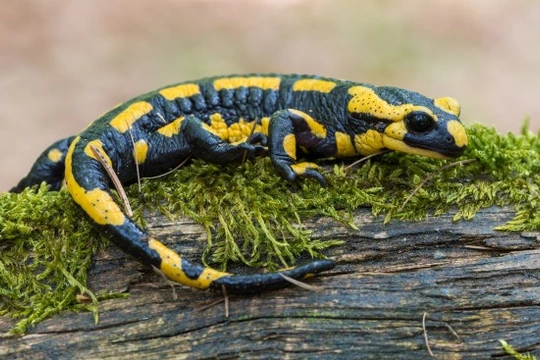Pets
Pets for studWanted petsBreedersAccessories & services
Knowledge hub
Support
Support & safety portal
Geckos and Salamanders - Their similarities and differences
To the uninitiated, the gecko and the salamander can appear very similar to each other, being as they are both small lizards with similar shaped bodies. However, when you look beneath the surface, these two animals are very distinctly different from each other, and have evolved separately into two unique orders. Geckos and salamanders do not even fall into the same group of lizard classifications, with geckos classed as a species of reptile while salamanders fall under the order amphibians. There are over 350 different species of salamander alone, while the gecko species diversity ranges up to almost 1,500 different types!
In this article, we will discuss some of the similarities and differences between geckos and salamanders, so that you will be able to tell them apart. Read on to learn more!
Body shape and style
Among all of the different species of both salamander and gecko, there are of course some exceptions; however, as a rule, all of the species have a roughly similar body shape and layout. Both animals have similar bodies, four legs, a long tail proportionally to the body, and a clearly defined head and tapered neck. Both salamanders and geckos also tend to be on the small size in lizard terms, at generally under 12” long.
However, some salamanders can grow much larger than this, with the Hellbender salamander reaching well over 24” long as standard, and the giant Asian salamander being a real giant at over five feet long!
Comparatively, the largest gecko species is only just over 12” in length, and weighs under 1lb.
Living environment and habitat
The salamander is an amphibious animal, and many species never leave the water at all! Geckos, on the other hand, generally live in the trees and above the ground, and while they range all across the world in all sorts of environments, many geckos live in very dry, arid climates. Generally if you are far from a stream, lake or body of water and spot a potential gecko or salamander, you will almost certainly be looking at a gecko.
Reproduction
One of the key differences between the ways that amphibians and reptiles reproduce is the way that the eggs are produced and protected before hatching.
Amphibious reptiles such as the salamander produce eggs without a hard shell, meaning that they need to hatch in the water or an incredibly damp environment in order to stop the egg desiccating and drying out, killing the inhabitant.
The eggs of reptiles such as the gecko are produced with a shelled amniotic guard, protecting the baby lizard in the egg from drying out in hot or dry climates before hatching. This means that geckos can and have thrived in and colonised habitats far from water sources, where the salamander would be unable to survive. Geckos reproduce by internal fertilisation, where the egg itself is already fertilised when it is expelled from the body; depending on the species of salamander, they may practice either internal fertilisation, or external fertilisation (where the eggs re fertilised after production).
The skin and scales
The skin, scales and texture of the salamander and the gecko are also very different from each other, as befitting the natural environments in which the two respective types of animals live.
The moisture-loving salamander has smooth skin that is always moist or damp, and in some cases, feels slimy to the touch. The gecko, on the other hand, has a dry, scaled body, which may be either smooth or rough depending on the species. The salamander’s skin is water-permeable, while the gecko’s skin is fairly resistant to water uptake.
Both the gecko and the salamander will regularly go through a process of skin shedding and renewal, and both animals will generally seek out a damp spot to go through their shedding, to aid with the process. After shedding, both animals may potentially eat their shed skin, which can help to provide them with essential nutrients that help to give them an extra boost after the energy expended during the moulting process.
What they eat
Geckos and salamanders are both carnivorous animals, which eat and prey on smaller animals to provide their nutrients. There is some crossover in terms of the diet that the salamander and the gecko can potentially eat, with both animals being happy to consume food like insects, small invertebrates and worms of various types. As salamanders are aquatic, they will generally feed on smaller prey that resides within their body of water, but some of the very large salamander species will actually hunt larger prey such as fish, and even smaller salamanders!
Salamander larvae that hatches in water will consume fine plankton and aquatic debris that is present in the water around them.
As well as bugs, insects and worms, the gecko may also eat vegetable products in the wild too, such as soft, sweet fruit, and even the nectar from flowers!



